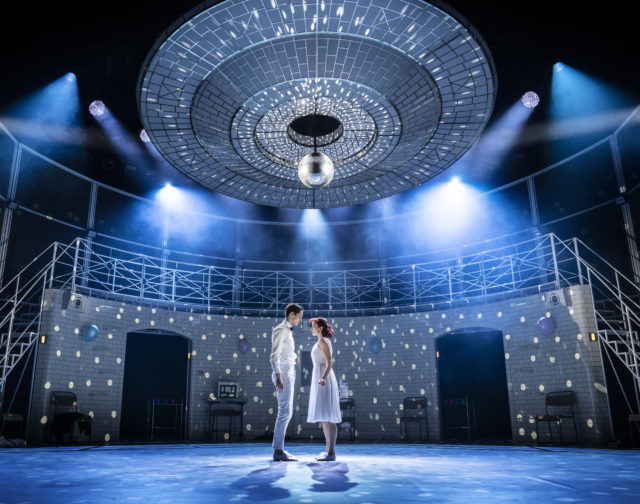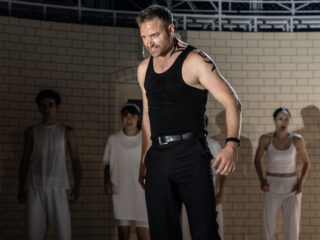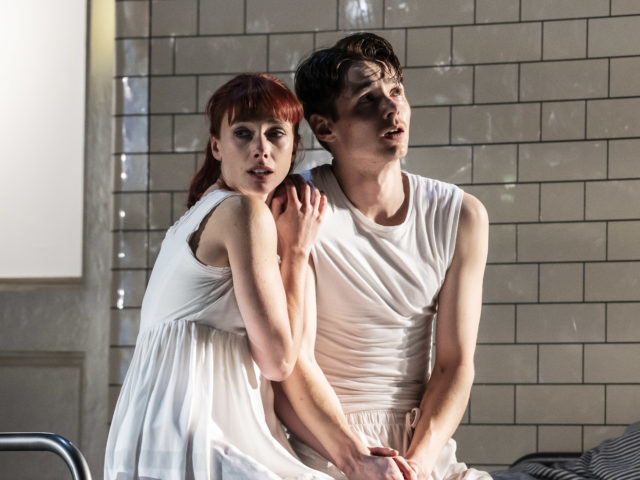Beatrice Squires reviews Matthew Bourne’s Romeo and Juliet.

ROMEO AND JULIET, Director and Choreographer: Matthew Bourne, Designer: Let Brotherston, Lighting: Paule Constable. Image credit: Johan Persson
A classic, reimagined
Shakespeare’s famous tragedy, Romeo and Juliet, has been adapted for the stage and screen in myriad ways. So when the brilliant choreographer and director Matthew Bourne was pondering how to put his own distinctive mark on it, he was apprehensive. “I had resisted it for many years feeling that Romeo and Juliet had been overdone in recent times; or at least, most ideas had already been explored so it was difficult to come up with something inspiring and original.” As the man responsible for casting an all-male Swan Lake and many other ingenious productions, if anyone can do it, he can.
A disturbing premise
The moment the curtain comes up at Sadler’s Wells Theatre, electricity pulsates from the young dancers, all of whom are recent graduates. Although moving together in perfect harmony – tumbling from one body to the next using each other for support – their body language has a noticeable strain. And this disturbing tone is what sets Bourne’s production so strikingly apart. Instead of the lavish palaces of Verona so often associated with this play, this stark, white-tiled setting is an institute for delinquents. Dressed in functional white, they are drugged and presided over by controlling medics and thuggish police.
A menacing Tybalt (Danny Reubens) enters the stage, throwing his weight around amongst the weary teenagers as their bullying guard. Taken by the lovely Juliet (played beautifully by Cordelia Braithwaite), he uses his brutish strength and power to rape her.

ROMEO AND JULIET, Director and Choreographer: Matthew Bourne, Designer: Let Brotherston, Lighting: Paule Constable. Image credit: Johan Persson

ROMEO AND JULIET, Director and Choreographer: Matthew Bourne, Designer: Let Brotherston, Lighting: Paule Constable. Image credit: Johan Persson
Doomed love
A new patient, Romeo (Paris Fitzpatrick), first sees the troubled Juliet from afar and is captivated by her. They then meet, and in one particularly memorable scene, share a dance that ripples with the beauty, poignancy and pain of first love. Prokofiev’s strident score is interjected with the light, sweet notes of the oboe as the lovers dance weightlessly together.
In another striking scene, the friends have a formal dance overseen by Rev. Bernadette Laurence. Dressed in stiff, silly clothing they are as rigid as the music they are moving to. But as soon as the Rev. leaves the room, the orchestra surges into a deep, powerful melody as the dancers shed their restrictive clothing. They then move together with an animalistic attraction reminiscent of the underground dancing scene in the film, Dirty Dancing. The lights dim and the glistening disco ball casts its bewitching flecks over the audience.
The beginning of the end
When Tybalt breaks up the party, fuelled by rage and alcohol, he goes after Mercutio. Eventually, he inflicts a fatal gunshot wound that is the catalyst for what will become the ultimate tragedy of the play.
Somehow, Bourne always manages to reinvent the classics in the most imaginative way – with narrative, choreography, stage design and costume. He takes big risks that pay off and leave the audience moved, captivated and inspired by his creative vision. This is a version of Romeo and Juliet unlike anything you’ve ever seen before.

